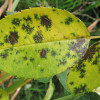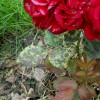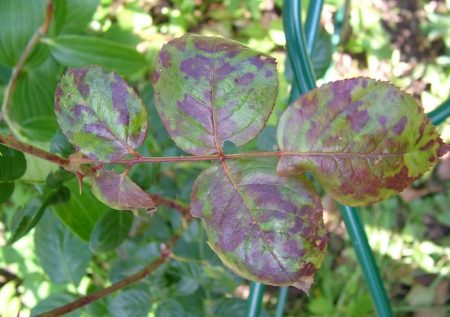Why rose leaves turn yellow - detailed reasons
Content
Sources of abnormal yellowness
It is very painful to watch how the leaves turn yellow and fall off the rose. It is much more pleasant to observe healthy individuals. What are the reasons for the yellowing of the leaves? Are straw organs always a sign of illness? In fact, there are many reasons for the yellowing of leaves.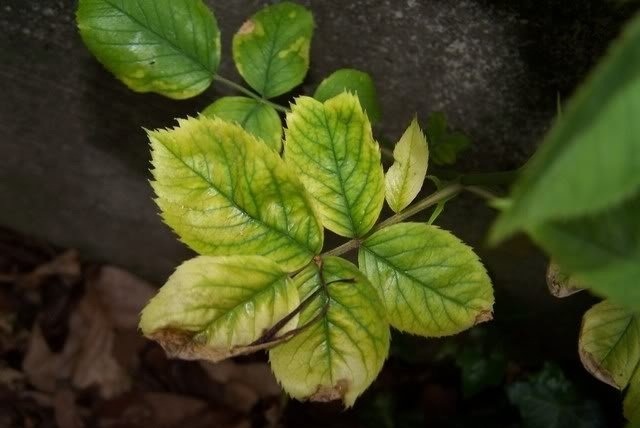
Sometimes the leaf turns yellow due to the physiological characteristics of an individual of a certain species and variety. In this case, it is not worth taking any action, especially since it is unlikely that it will be possible to change something. The situation is completely different if the organs of a young bush change color. In this case, inaction can even provoke the death of the plant.
The reasons for the yellowing of the organs of young individuals can be combined into groups according to the nature of the manifestation:
- Rapid yellowing and dropping. This phenomenon is usually observed in the case of unfavorable external conditions. In particular, sharp fluctuations in temperature. Similar phenomena can be observed in summer in case of frequent weather changes. However, most modern varieties are adapted to unstable environments.
- The leaves of the roses at the bottom of the bush turn yellow, most likely due to a lack of light. Perhaps the individual grows in the shade and suffers from this.
Therefore, you need to be especially careful when choosing a site for planting a rose. It should be protected from the wind and well lit by the sun. For example, the southern or southeastern side of the site is perfect.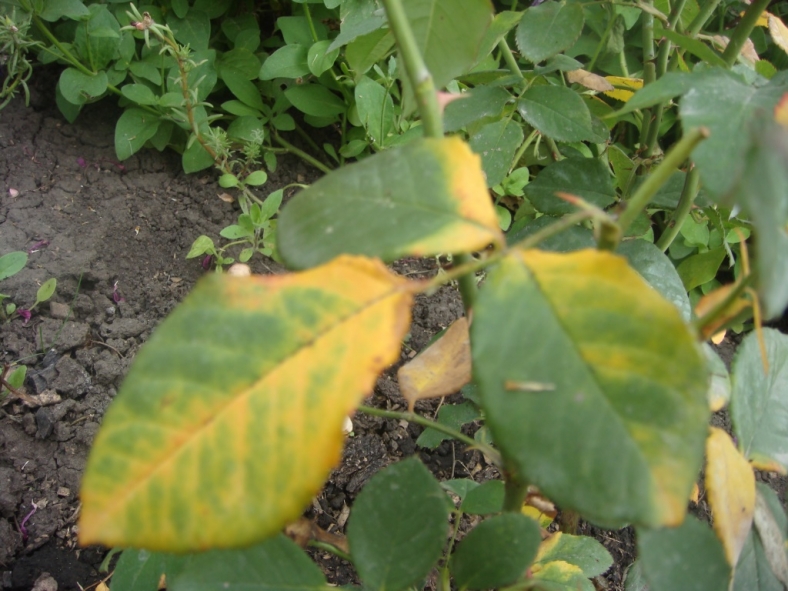
In the shade, not only a change in the color of plant organs is observed, but also elongation of shoots and a slowdown or cessation of flowering.
- Do the leaves turn yellow and curl, and the tips of the organs turn brown and dry? Rose is trying to tell you that she is short of water. In addition, in conditions of moisture deficit, the flowers are deformed and fall off in plants. The flowering process stops. In hot conditions, representatives of climbing varieties growing near the wall of the building are especially aware of the lack of water.
Young, recently planted individuals also need systematic moisture.
- Yellow spots appeared on the organs. Usually this phenomenon is due to a lack of nutrients in the rose's body.
Video "Causes of yellowing of rose leaves"
In this video you will see why the leaves of roses turn yellow.
Nutritional deficiency
Why do the leaves turn yellow? Very often, the cause of the phenomenon lies in the imbalance of fertilizing plants with fertilizers. Some rose lovers do not pay attention to the change in the color of organs at all and continue to care for individuals as usual.
- Nitrogen. Nitrogen starvation of the crop is often the cause of leaf discoloration. For example, a bush planted on poor soil or insufficiently fertilized throughout its life often suffers from a deficiency of the element. If enough nitrogen was added in the spring, the rose bloomed and gained strength, but in this case the plant used all the nitrogen. Without re-fertilization at the end of summer, you can observe the "October" yellowing and leaf fall.
Determining the lack of nitrogen is not difficult, since the color change occurs gradually, starting with the organs located below. You can immediately ignore the change in the color of several leaves. However, after a while, the bush will turn yellow by almost half, after which the plant turns pale.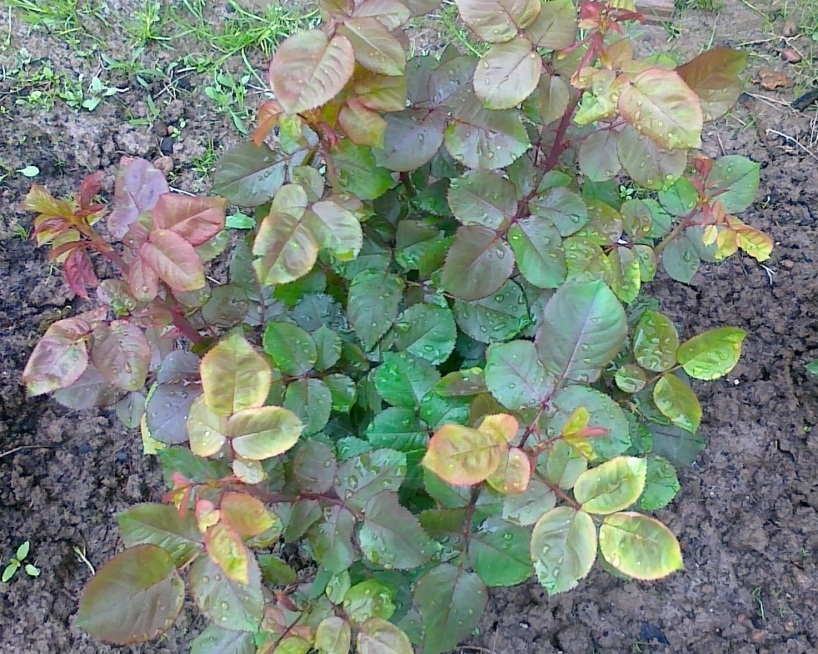
Another "spring" sign of nitrogen deficiency is the yellowing of the shoots. Instead of being dark in color, the organs become pale red or slightly brown. The leaves growing on such stems have the same color.
It is easy to determine the lack of nitrogen in the organism of a culture, as well as to completely eliminate it. You just need to dilute the urea (a tablespoon per 10 liters of water) and pour half a bucket per bush. Watering on leaves is allowed. The first positive results will become noticeable after a couple of days, and after 10 days the individual will completely acquire a normal healthy appearance.
- Potassium. With its deficiency, the leaf fringing first becomes straw, after which the organ changes color to brown and dries up. In this case, ash and potash fertilizers will come to the rescue.
- Iron and manganese. With a lack of at least one of the elements, the leaves develop chlorosis, the space between the veins changes color. The vein does not change color, remaining green.
With iron deficiency, first of all, the upper young organs turn yellow, and with a lack of manganese, old leaves.
Often, a shortage of these elements is observed on soils with a reaction above 7-7.5, that is, on alkaline soils, which usually contain chalk and dolomite. Also, individuals may lack iron and manganese on soils that are oversaturated with lime during the deoxidation procedure.
What to do to correct the situation? You can get rid of chlorosis by spraying flowers with a solution of fertilizing with iron and manganese. It is also necessary to normalize the reaction of the soil (indicator 5.6 - 7). You can acidify the earth with organic matter, for example, mullein. The procedure involves creating a small hole on one side of the plant, where there is access to the root. It is necessary to pour 2.5 liters of mullein solution into such a depression. Thus, part of the root system will gain access to keel soil, which will normalize the number of elements.
Waterlogging of the soil
Leaves may also turn yellow due to waterlogging of the root system of roses. Often this happens due to the long-term presence of plants in moist soil. The phenomenon is usually observed in low clay areas during rainy periods. Dew plays a significant role in this phenomenon. Signs of excess moisture are reminiscent of a lack of nitrogen. The color change begins in the lower organs, but nitrogenous feeding does not improve the situation in any way.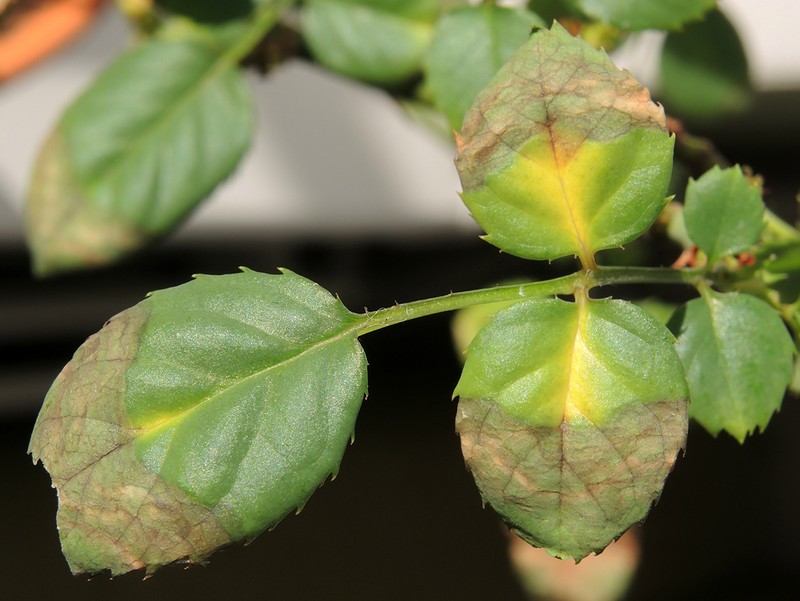
If the area is located in a lowland, then it is better to plant flowers on hills or raised areas.
Diseases and pests
Yellowing of the leaves can be a reaction to disease. If the disease was provoked by a fungus, then the bush is easy to save. If the causative agent is a virus, then the infected individual must be eliminated from the site and destroyed.
Most often, roses are attacked by black spot. Sometimes it is not even considered a disease, believing that spots are a natural development of the plant. However, this is still a fungal disease that is dangerous for almost all varieties of roses.
A fallen leaf from a bush is evidence that the plant will not endure the winter well and will slow down its growth and flowering.
Yellow leaves with black spots are a manifestation of mottling. You can help the culture with complex fungicides, for example, "Topaz", but it is more effective to use such spraying for prophylaxis (mid-end of June).
In addition, there are viral diseases, as a result of which the leaves are covered with small or large spots of various colors. Usually the leaves become smaller, change shape, and the plant itself slows down growth and stops blooming. There are no methods of treating viral plant diseases, so infected bushes are simply removed from the site and destroyed.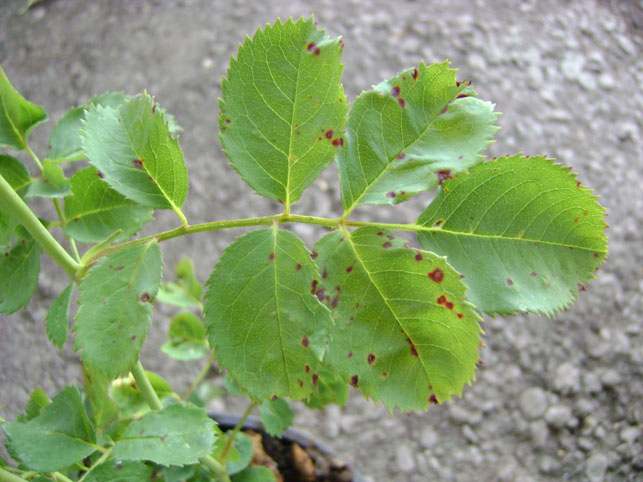
If the leaves not only turned yellow, but also began to fade, then there is a high probability that the larvae of the May beetle or other root gnawers have settled on the roots of the flowers. You can fight pests with a variety of insecticides.
So, often rose growers observe yellowing of the leaves of their plants. Some cannot determine the cause of the phenomenon, while others do not know what to do to change the situation. Leaves from roses can turn yellow and fall for various reasons. But they are easy to identify and subsequently eliminate. The main thing is to carefully monitor the colors and not to take yellowing for granted, the natural development of individuals.
Video "Diseases of roses and their pests"
From the video you will learn about the most common rose diseases and how to deal with them.

